- Tough as nails, but also thoroughly modern and well-equipped
- Efficient engine
- Handles well
- The ride is bouncy when unladen
- Engine can be gruff when cold
- Driver attention monitor makes you swear every few seconds...
The 2026 Mitsubishi Triton GSR is the crème de la crème of Mitsubishi’s ute lineup in Australia, catering to those after a fully loaded, top-tier dual-cab. Sitting at the top of the range, the GSR’s tough exterior is backed by a feature-packed cabin and a full suite of off-road add-ons.
Utes are everywhere in Australia. They dominate our roads and remain one of the most popular vehicle segments in the market. From mainstays like the Toyota HiLux and Ford Ranger, through to the Mazda BT-50, Isuzu D-Max, and Nissan Navara, plus more budget-friendly options such as the GWM Cannon and LDV T60, buyers are spoiled for choice.
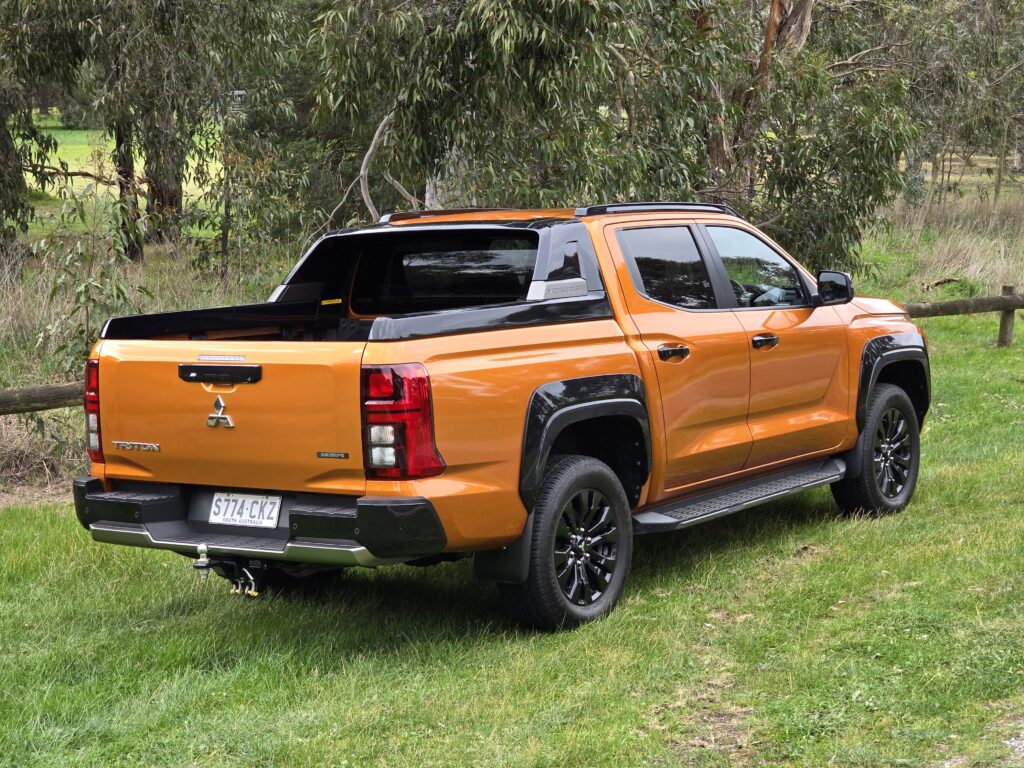
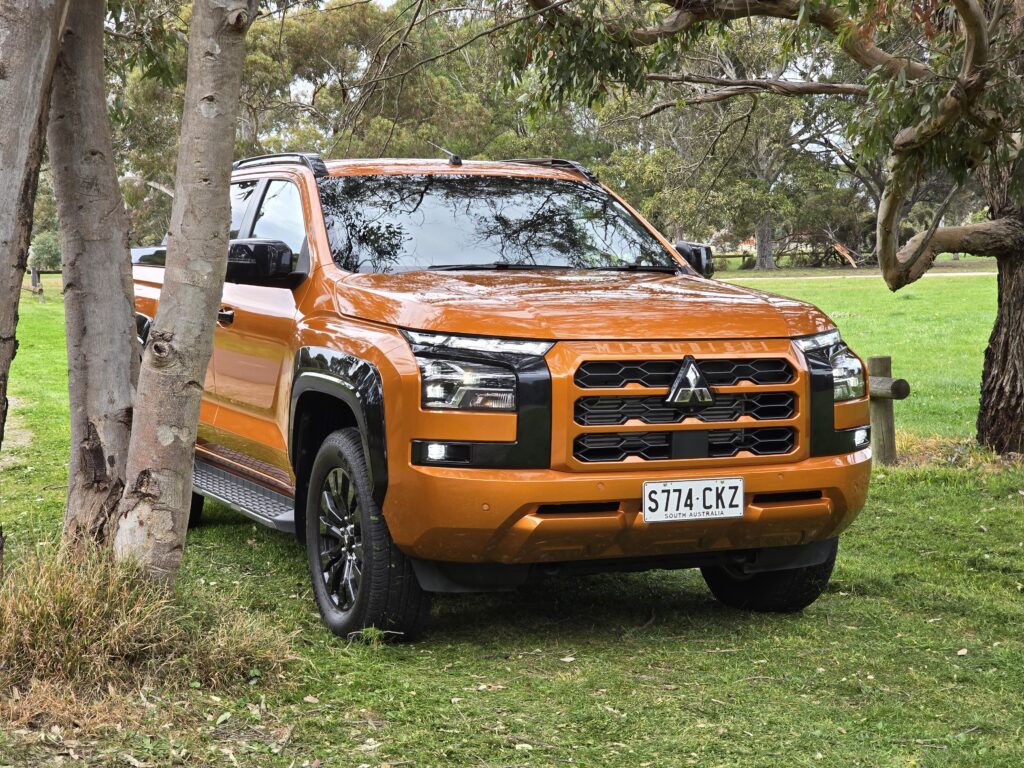
But with so many contenders, how many more utes can the Australian market really handle?
Not only is the competition fierce, but prices have crept steadily upward — a $70K-plus ute is no longer unusual. That’s where Mitsubishi steps in. Its challenge is clear: can the new Triton match the polish of the Ranger and HiLux, maintain its hard-earned reputation for toughness, and still outshine cheaper rivals?
We spent time with the Triton GSR to find out whether Mitsubishi’s latest dual-cab delivers the right balance of performance, comfort, and value that Aussie ute buyers demand.
2026 Mitsubishi Triton Pricing
Not considering single-cab and Club Cab variants of the Triton, prices for the Triton Dual Cab stretch from $43,690 to $63,840 before on-roads, positioning the Triton as a smart value play in Australia’s booming 4×4 segment. Sitting at the top is the flagship Triton GSR, promising to blend rugged workhorse ability with some added comfort and refinement.
| Model | Price before on-road costs |
|---|---|
| 2025 Mitsubishi Triton GLX 4×2 dual-cab ute | $43,690 |
| 2025 Mitsubishi Triton GLX 4×4 dual-cab ute | $50,940 |
| 2025 Mitsubishi Triton GLX+ 4×4 dual-cab ute | $53,290 |
| 2025 Mitsubishi Triton GLX-R 4×4 dual-cab ute | $56,740 |
| 2025 Mitsubishi Triton GLS 4×4 dual-cab ute | $59,090 |
| 2025 Mitsubishi Triton GSR Special Edition 4×4 dual-cab ute | $63,140 |
| 2025 Mitsubishi Triton GSR 4×4 dual-cab ute | $63,840 |
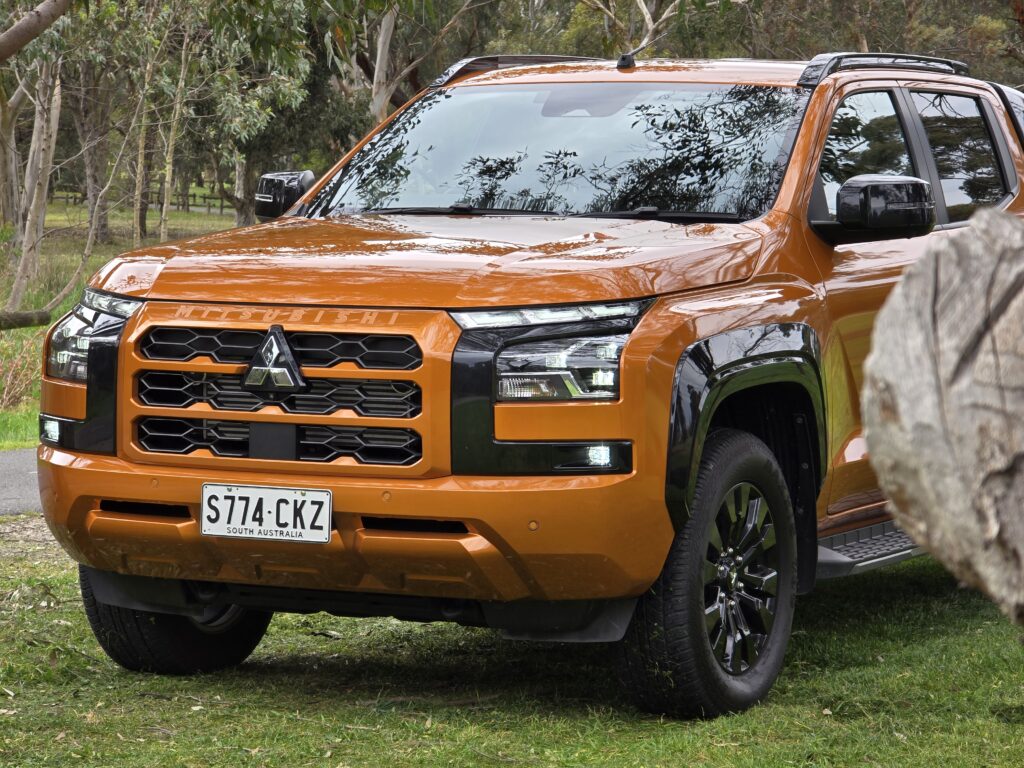
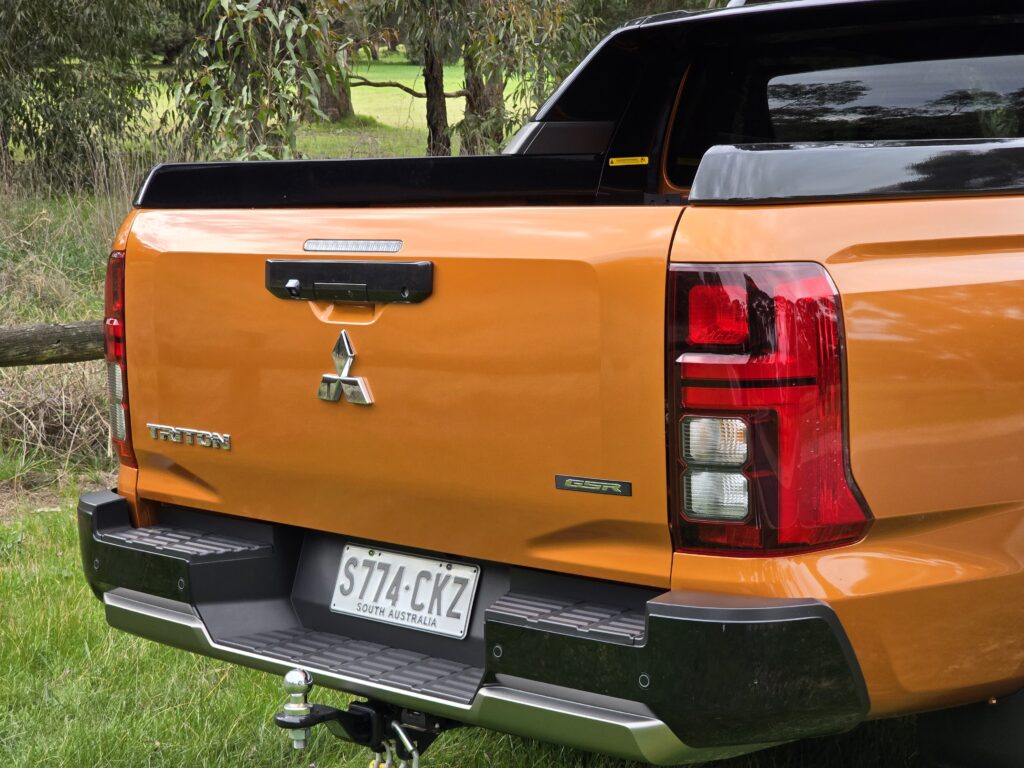
Closest in price to the Triton GSR in the 4×4 Ford Ranger lineup is the Ranger Wildtrak bi-turbo double-cab 4×4, which starts at $63,840 before on-roads. The 4×4 XLS bi-turbo double-cab at $57,630 before on-roads is also nearby, but the Wildtrak is the more direct rival in terms of specification and features.
Toyota’s most comparable option is the HiLux Rogue or top-spec SR5 dual-cab 4×4 pickup, which sits around $61,000 to $62,000 before on-roads, depending on options. The SR5 can also be fitted with mild-hybrid V-Active tech, pushing the price slightly higher.
Isuzu’s competitor is the D-Max LS-U 4×4 crew-cab, priced from $60,500 before on-roads, while the recently updated Mazda BT-50 XTR dual-cab 4×4 starts at $59,800 before on-roads.

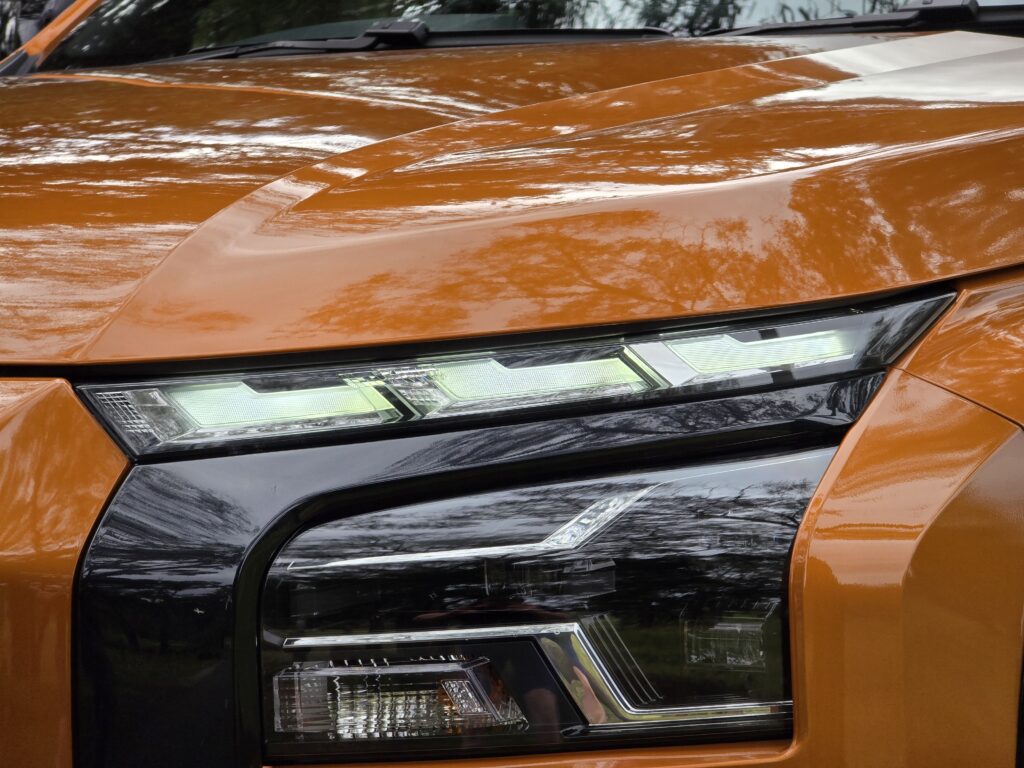
In other words, the Triton GSR sits firmly in the upper-mid to premium segment of Australia’s dual-cab 4×4 market, offering many of the features of its more expensive rivals but at a slightly lower entry point.
2026 Mitsubishi Triton Feature List
2025 Mitsubishi Triton GLX equipment highlights:
- 17-inch steel wheels
- Highway terrain tyres on 4×2
- All terrain tyres on 4×4
- Automatic high-beam
- Heavy-duty rear suspension
- Keyless entry
- 9.0-inch touchscreen infotainment system
- Wireless Apple CarPlay
- Wired Android Auto
- Satellite navigation
- Four-speaker sound system
- 7.0-inch instrument cluster screen
- Black fabric upholstery
- Manually adjustable driver’s seat with power lumbar
- Vinyl flooring
- Air-conditioning
- Floor console box with lid
- 2x cupholders
- 2x bottle holders
- Sunglasses holder
- Second-row bench with centre armrest
- Seatback pocket
- 1x front USB-A outlet
- 1x rear USB-A outlet
- 1x front USB-C outlet
- 1x rear USB-C outlet
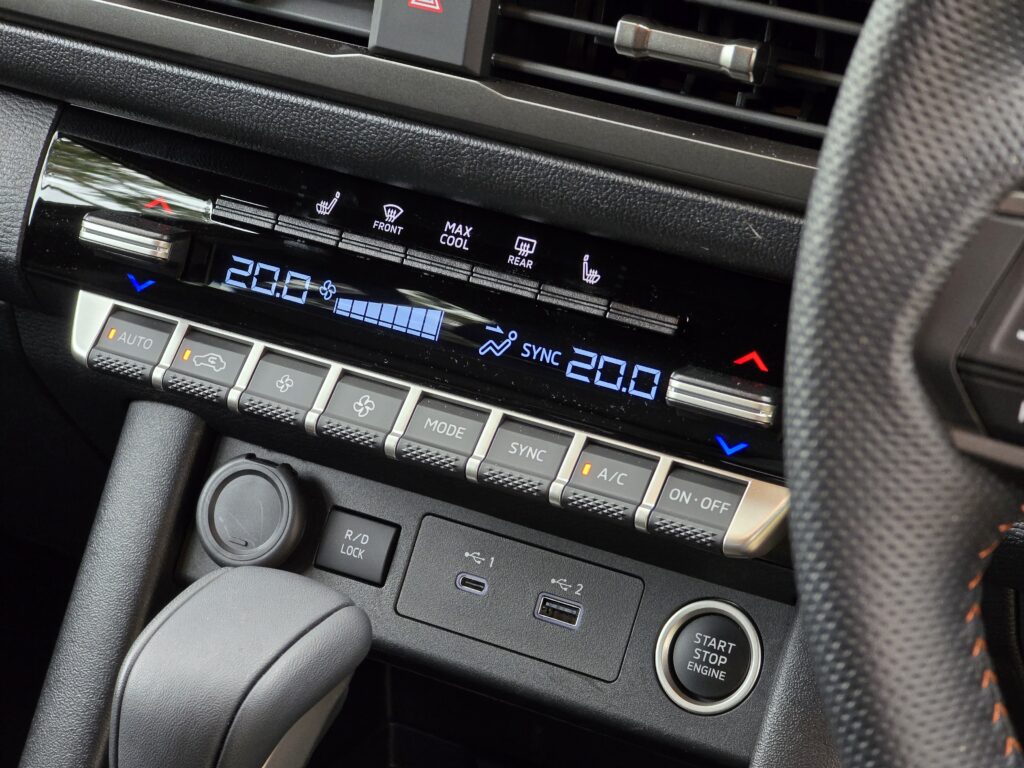
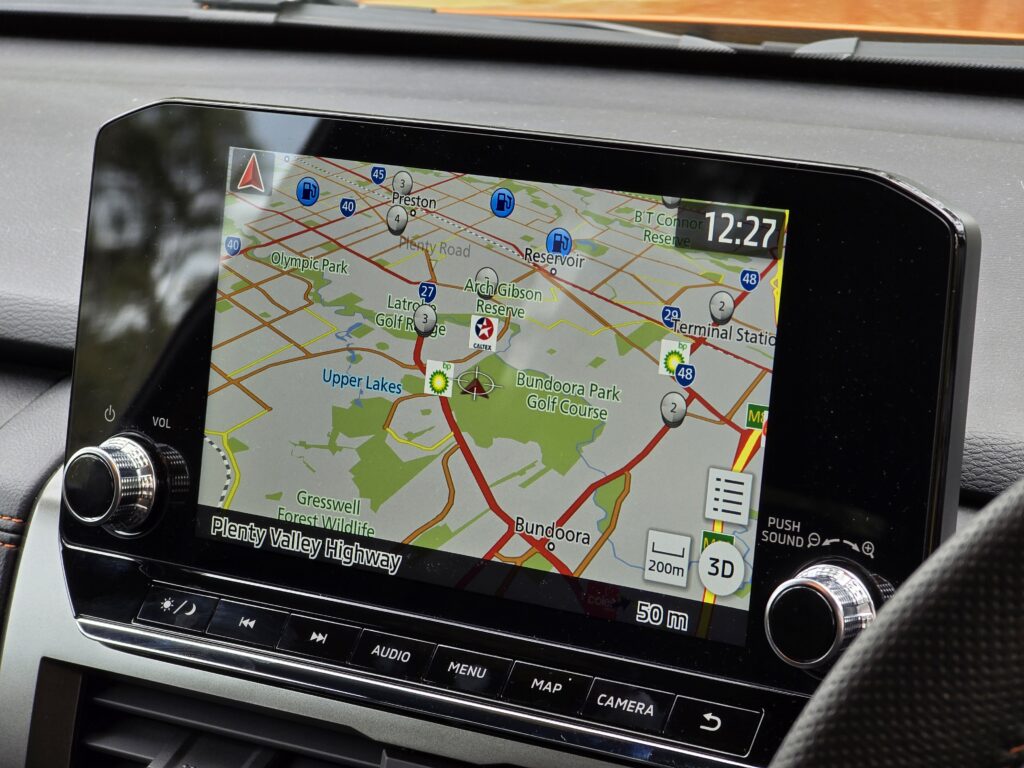
GLX+ adds:
- Black fabric upholstery with silver stitching
- 17-inch alloy wheels with all terrain tyres
- Locking rear differential
- Side steps
- Front fog lights
- 17-inch alloy wheels
- Rear privacy glass
- Rear AEB
- Surround-view camera
- DAB+ digital radio
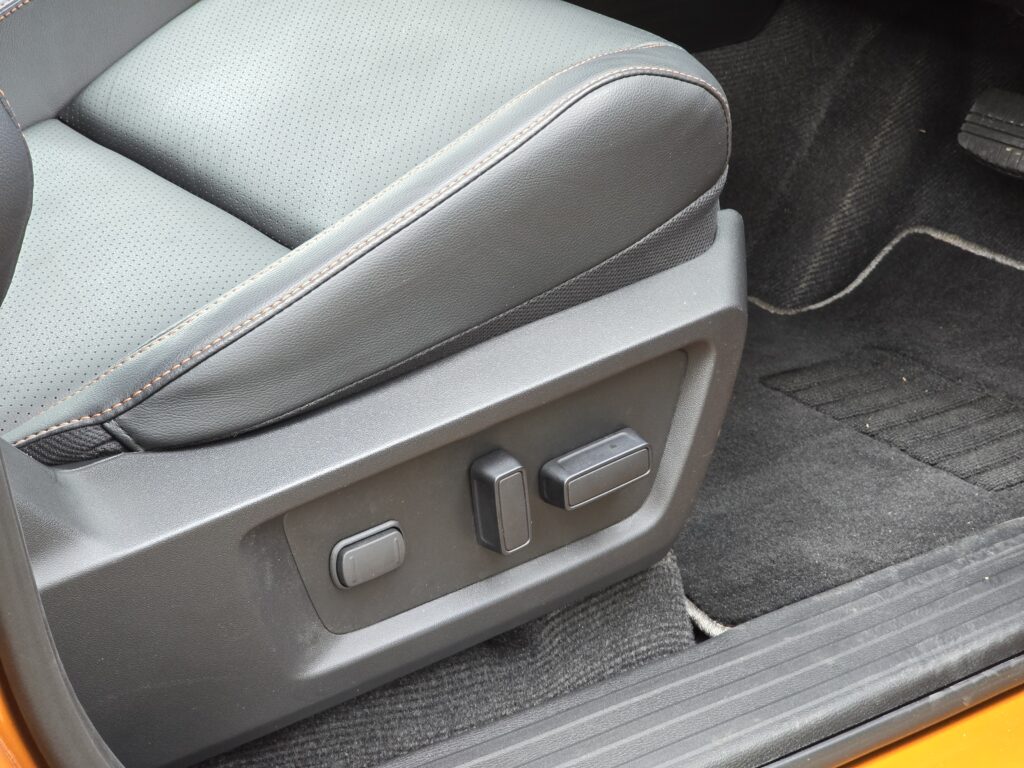

GLX-R adds:
- Dual-strut tailgate assist system
- Black 18-inch alloy wheels with highway terrain tyres
- Standard-duty rear suspension
- Super Select 4WD II
- Black sports bar
- Door body mouldings
- Side step delete
- Leather-wrapped steering wheel
- Floor carpet
- Hill descent control
- Terrain control

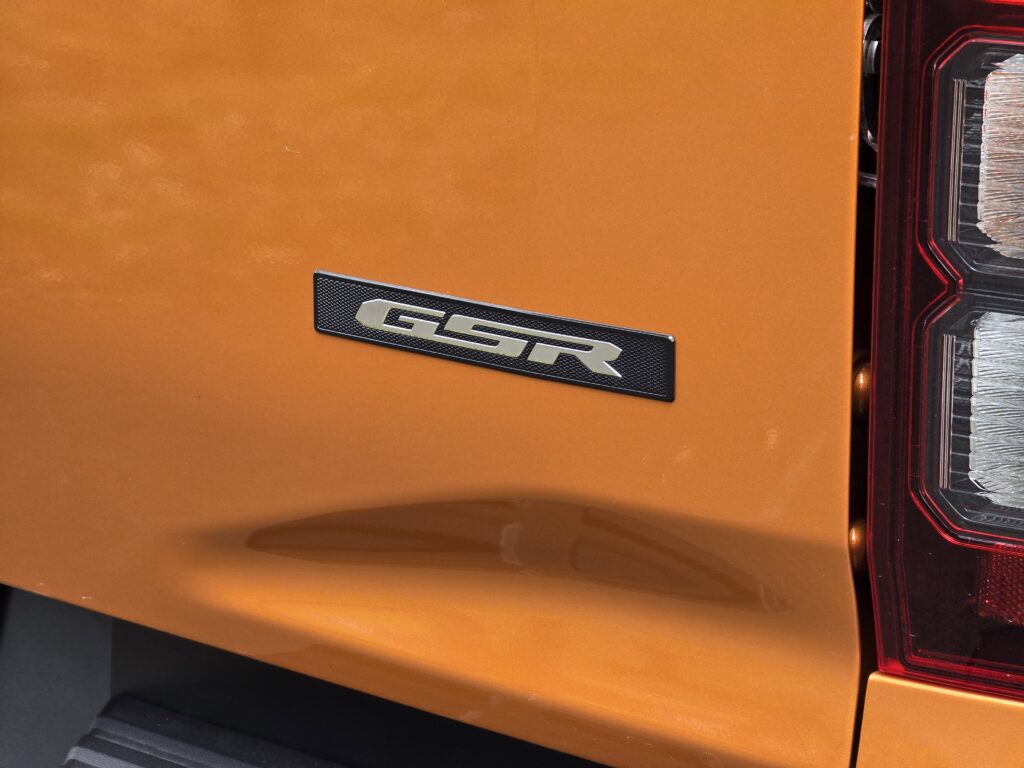
Triton GSR adds:
- Black 18-inch alloy wheels
- Body-colour grille
- Sports bar
- Roof rails
- Black leather upholstery, orange stitching
- Dark Titanium interior accents
- 2 x dash-mounted cupholders
- Power driver’s seat
2026 Mitsubishi Triton Safety
The Mitsubishi Triton has a five-star ANCAP safety rating based on testing carried out in 2024. It scored 86 per cent for adult occupant protection, 89 per cent for child occupant protection, 74 per cent for vulnerable road user protection, and 70 per cent for safety assist.
Standard safety equipment includes:
- 8 airbags incl. front-side
- Autonomous emergency braking (AEB)
- Pedestrian, Cyclist detection
- Junction assist
- Adaptive cruise control
- Blind-spot monitoring
- Driver attention monitoring
- Emergency lane keeping
- Front, rear cross-traffic alert
- Intelligent speed limiter
- Lane keep assist
- Multi-collision brake
- Parking sensors front, rear
- Trailer stability assist
- Reversing camera
- Tyre pressure monitoring
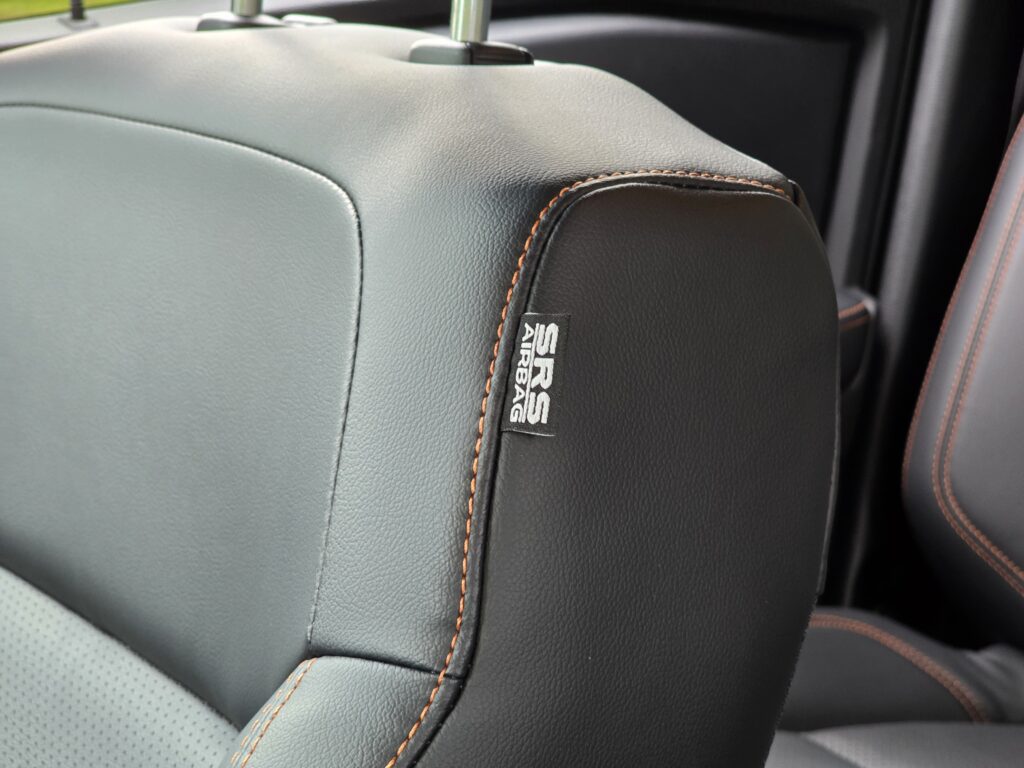
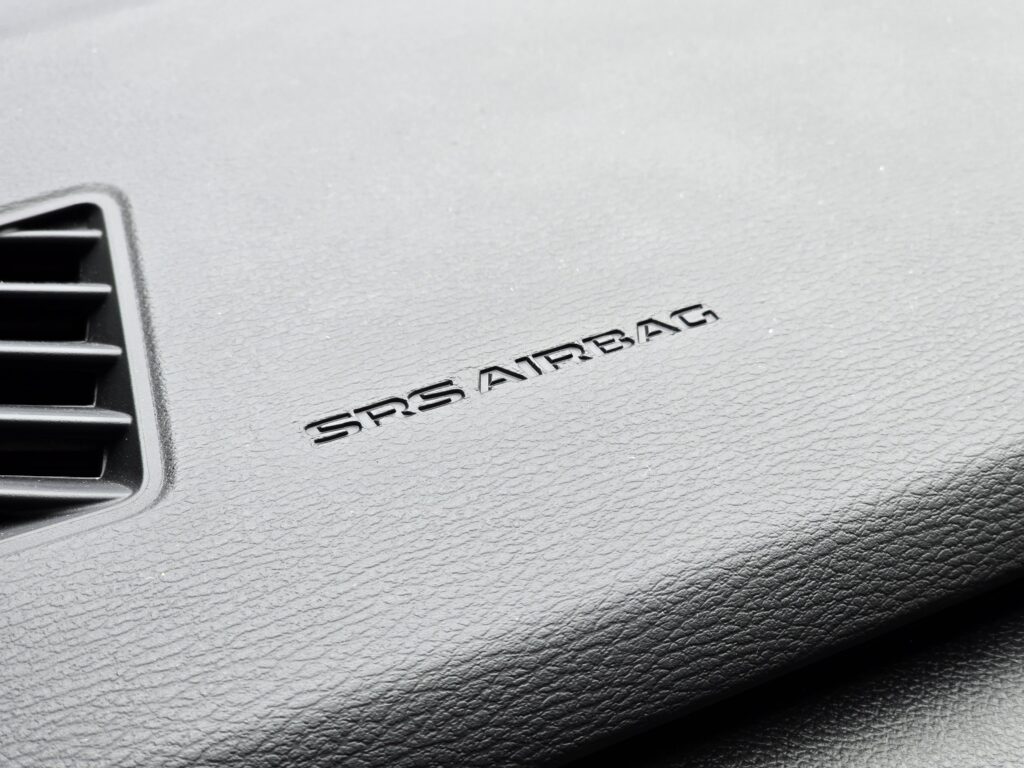
GLX+ and up get a surround-view camera and rear AEB.
2026 Mitsubishi Triton Colour Options
The Mitsubishi Triton GSR is available in six exterior colours: White Diamond, Black Mica, Graphite Grey, Blade Silver, Red Diamond, and Yamabuki Orange.
White Diamond is the only standard, no-cost finish, while the remaining metallic and pearlescent hues attract a $740 premium. The hero Yamabuki Orange on our car stands out as the signature colour for the GSR, perfectly complementing its blacked-out accents and aggressive stance.
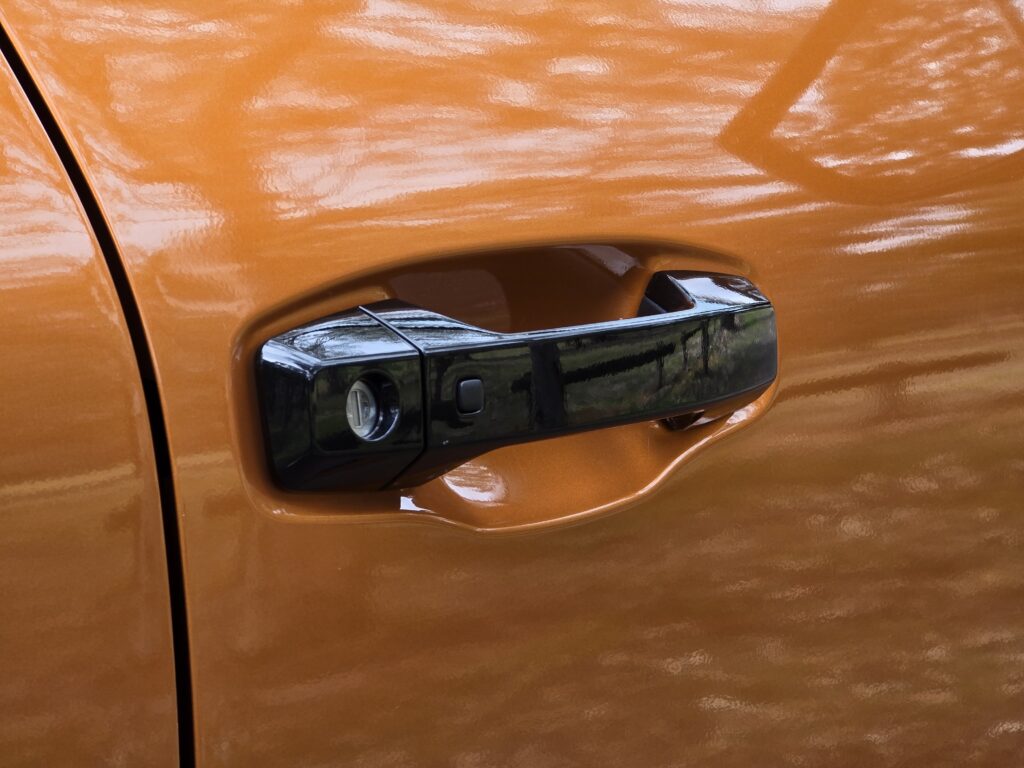

What’s under the bonnet?
Every new Triton is powered by the same engine – Mitsubishi’s 2.4-litre twin-turbo four-cylinder diesel. It’s a significant step forward from the old single-turbo unit, offering stronger outputs of 150kW at 3500rpm and 470Nm between 1500 and 2750rpm. Power is sent through a six-speed automatic transmission, and in the GSR (as well as the GLS and GLX-R) it’s backed by Mitsubishi’s excellent ‘Super Select II’ full-time four-wheel-drive system.
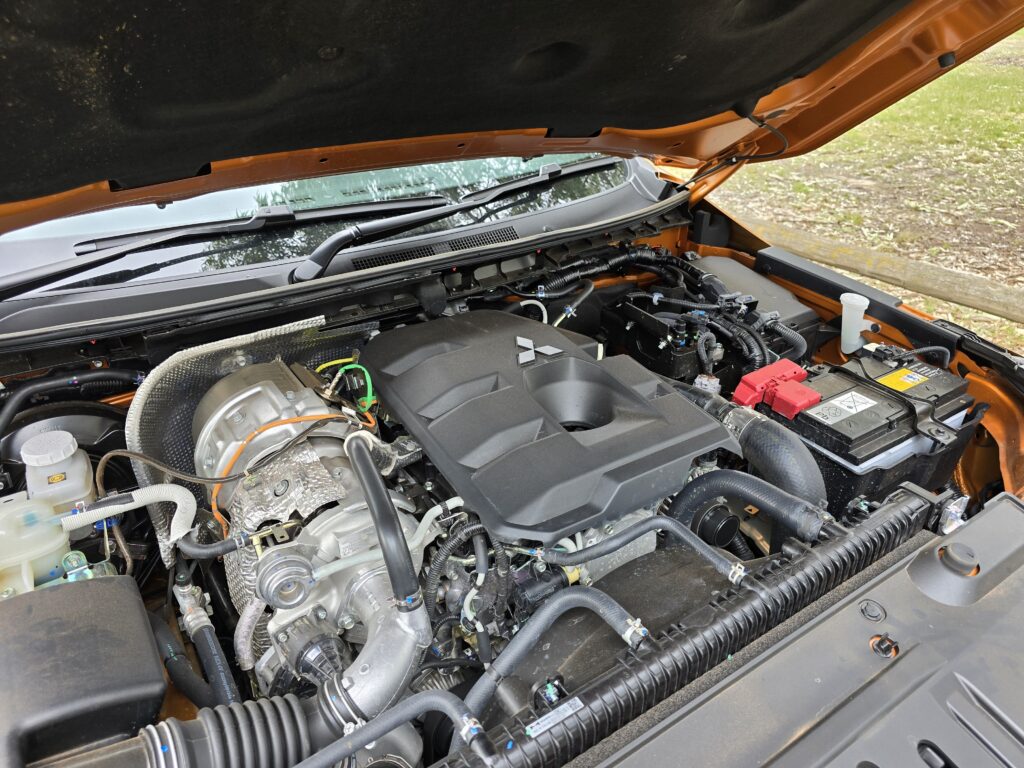
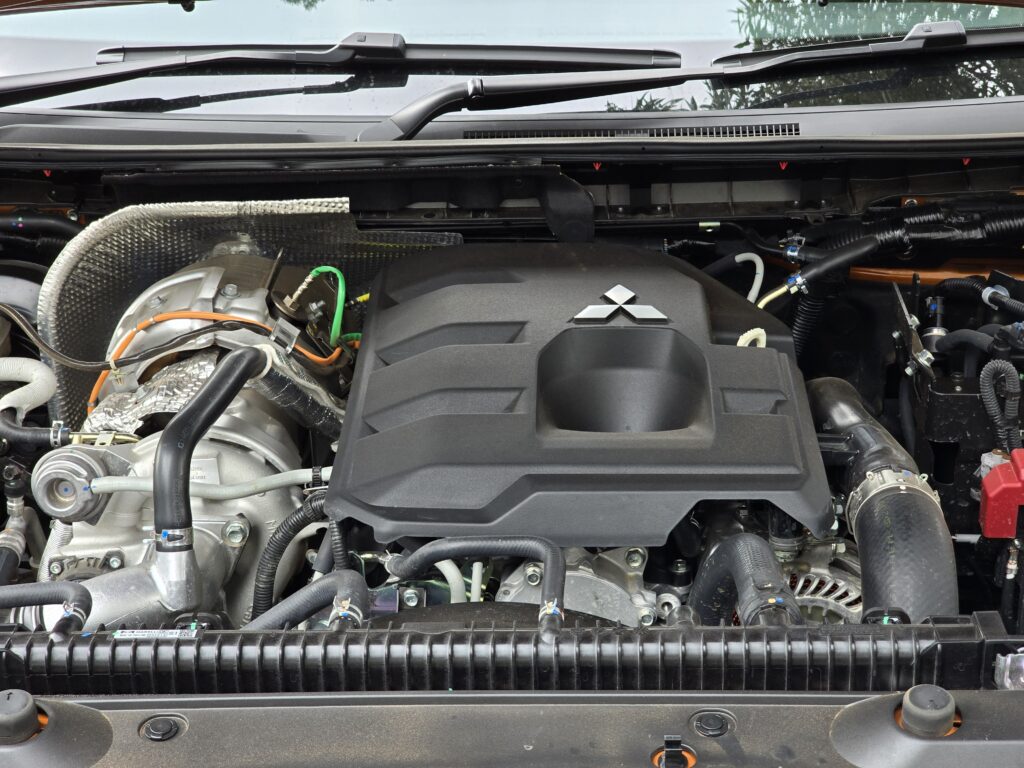
Cheaper Triton variants make do with rear-wheel drive or ‘Easy Select’ part-time four-wheel drive, but the Super Select setup is worth having. It allows you to run in full-time 4WD on sealed roads — something most utes can’t manage — and provides selectable low range for proper off-road work.
On paper, the new bi-turbo doesn’t lead the class for outright power or torque, but on the road it feels much more muscular than the old engine. Low-down response is excellent, and the second turbo helps eliminate much of the lag that used to plague the Triton. The six-speed auto still isn’t the most intuitive transmission in the segment — it can hesitate when kicking down — but it shifts smoothly and is well matched to the engine’s torque band.
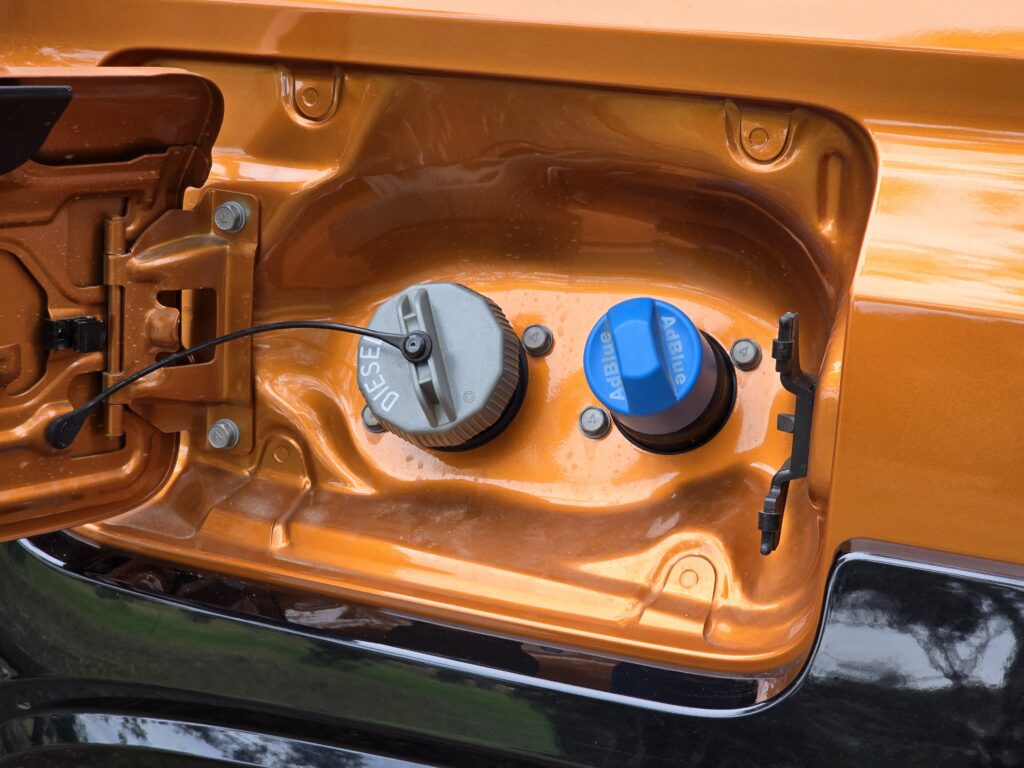
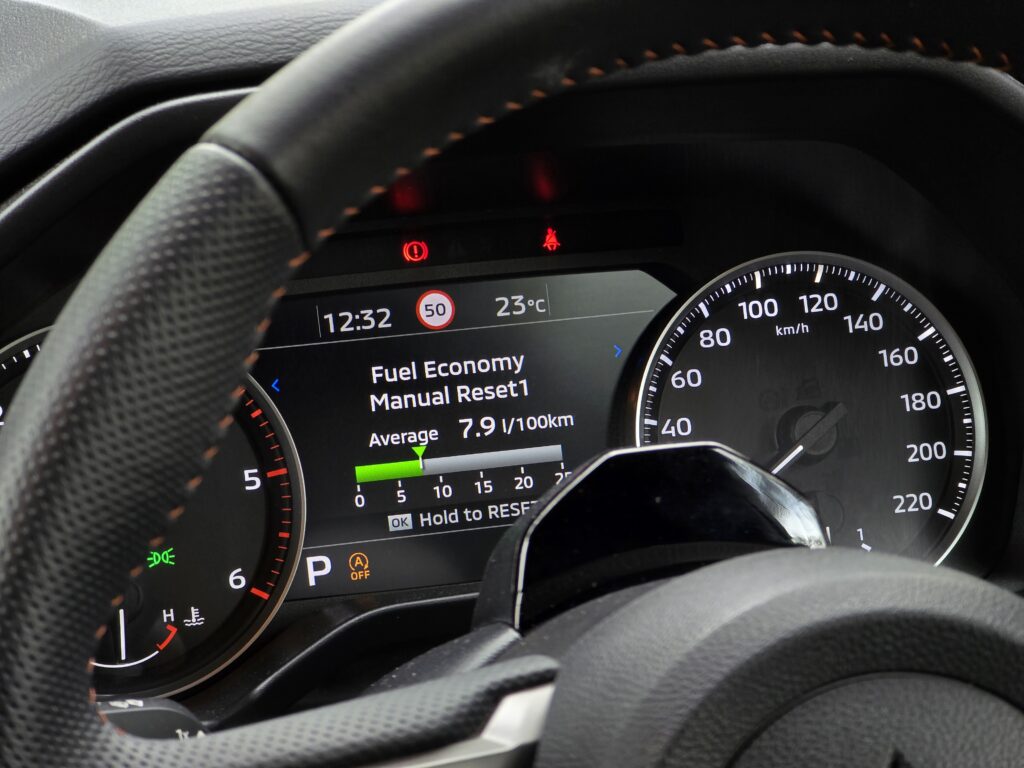
Official fuel economy for the GSR is 7.7L/100km, and we bettered that during our week with the car, averaging 7.5L/100km overall. Most of our driving was n the urban grind of Melbourne, with some freeway stints mixed in. On a relaxed 100-kilometre country run, we even saw the trip computer dip to 5.5L/100km, which is impressive for a dual-cab ute of this size.
Backing the powertrain is a 75-litre fuel tank and a 17-litre AdBlue tank, giving decent touring range. Payload sits at 1080kg, while braked towing capacity remains the class-standard 3500kg, with a 350kg towball down limit.
What is it like to drive?
Like its interior, the Triton GSR drives exactly how you’d expect from a modern Mitsubishi ute. It’s solid, predictable and easy to live with, but not without flaws. There’s a real sense of improvement over the old model, even if it still trails the best in class for polish and finesse.
The highlight of the driving experience is the new engine, flexible unit that delivers its of torque early and hangs onto it through the mid-range, making the Triton feel relaxed whether it’s empty or towing. There’s still a lot of diesel clatter at idle, especially when cold, but refinement is much better than before. At highway speeds the engine settles to a quiet hum, and Mitsubishi’s sound insulation keeps wind and tyre noise largely in check.


The six-speed automatic transmission shift through gears nicely, even if it isn’t the cleverest thing in the world. It’s smooth most of the time but occasionally hesitates between gears at low speeds, sometimes holding onto a gear for too long. Take cruising along at 48km/h, only to hear the engine revving at 2000rpm, seemingly for no reason. Manual control via the shifter is available, though there are no paddles and shifts aren’t particularly fast. Still, it’s easy enough to work around, and most owners will never feel short-changed.
On the plus side, Mitsubishi’s Super Select II 4WD system remains one of the best in the segment. Being able to leave the Triton in full-time 4WD on sealed roads adds a welcome layer of stability in wet conditions, and it transitions seamlessly between drive modes. It’s the kind of system that gives you confidence towing or heading onto gravel without having to think twice.
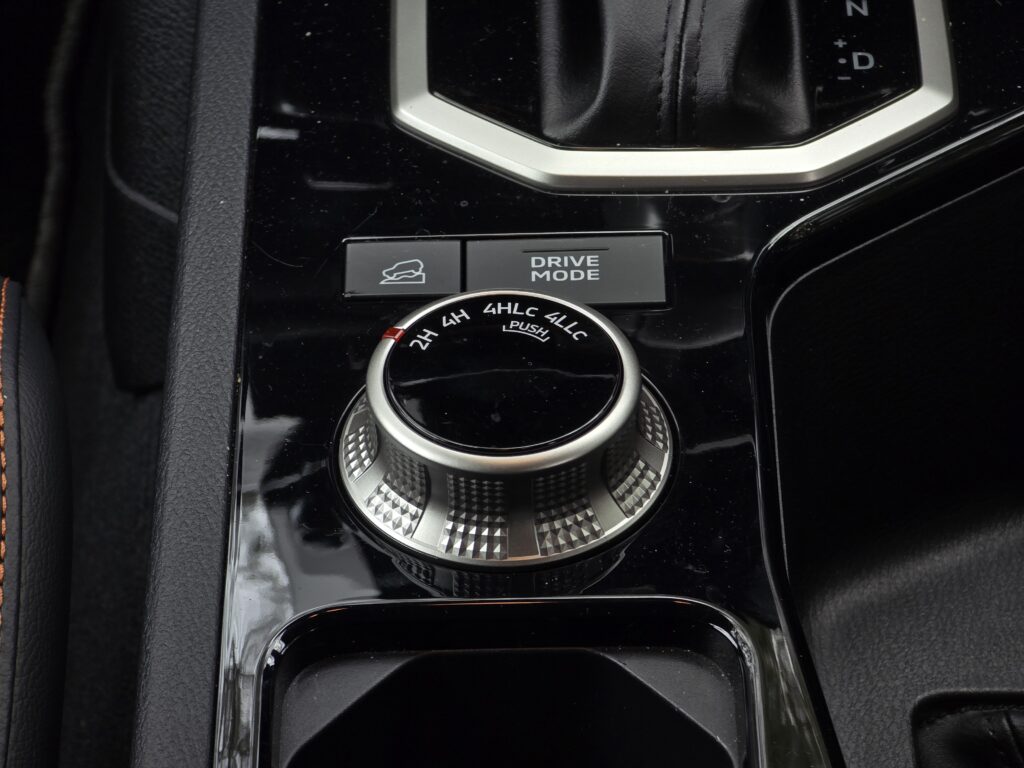
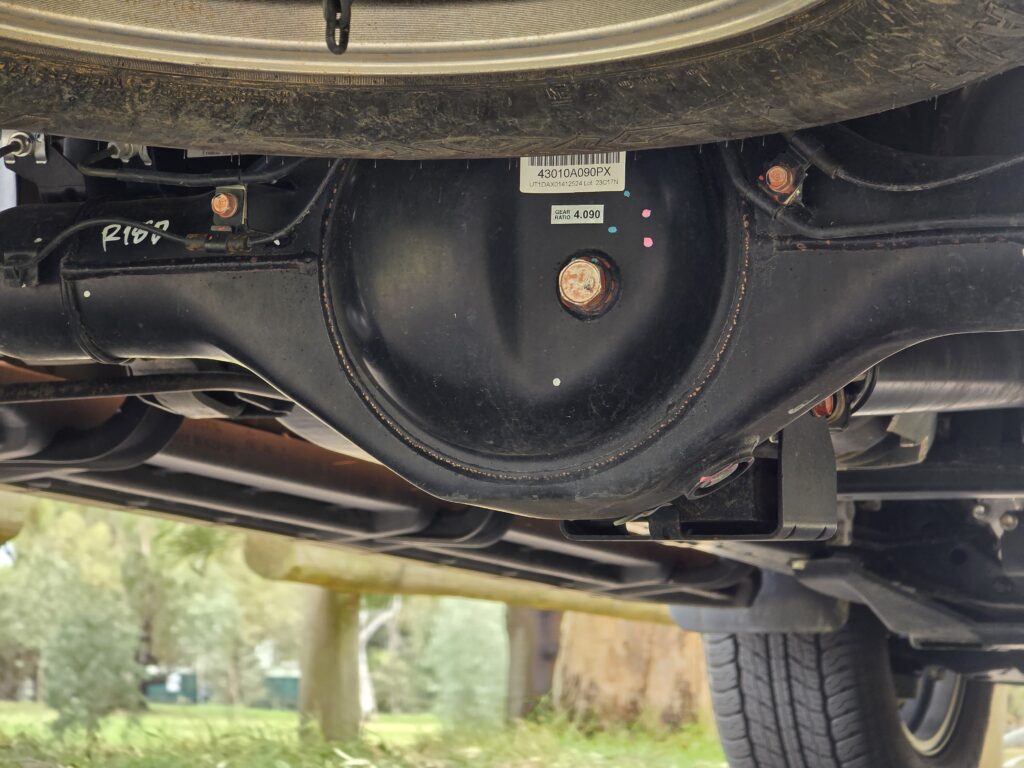
Ride quality is still on the firm side when unladen, it’s a ute after all, and there’s some bouncing around town. It’s not as sophisticated as a Ranger or Amarok, but it’s an easy ute to live with day to day.
Steering is another highlight. It’s light enough for carparks yet direct and well-weighted on the open road. The GSR feels surprisingly manoeuvrable for its size, and the turning circle is tight enough that it doesn’t feel cumbersome around town. Body roll is present but well controlled, and the Triton remains stable in quick changes of direction.
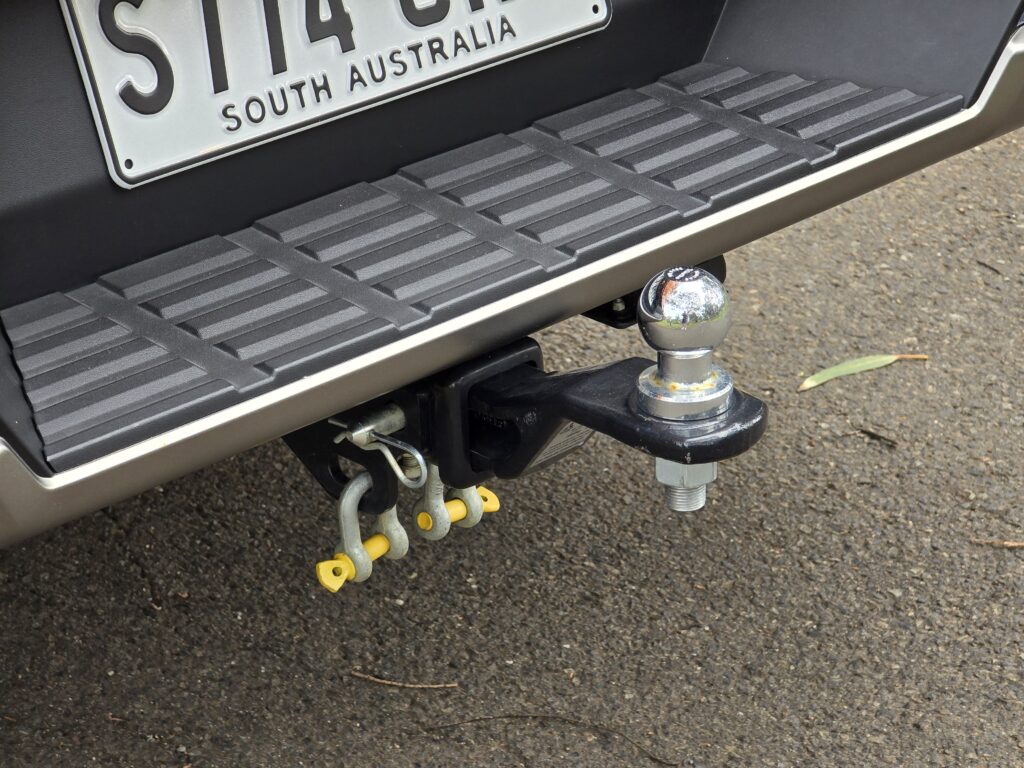
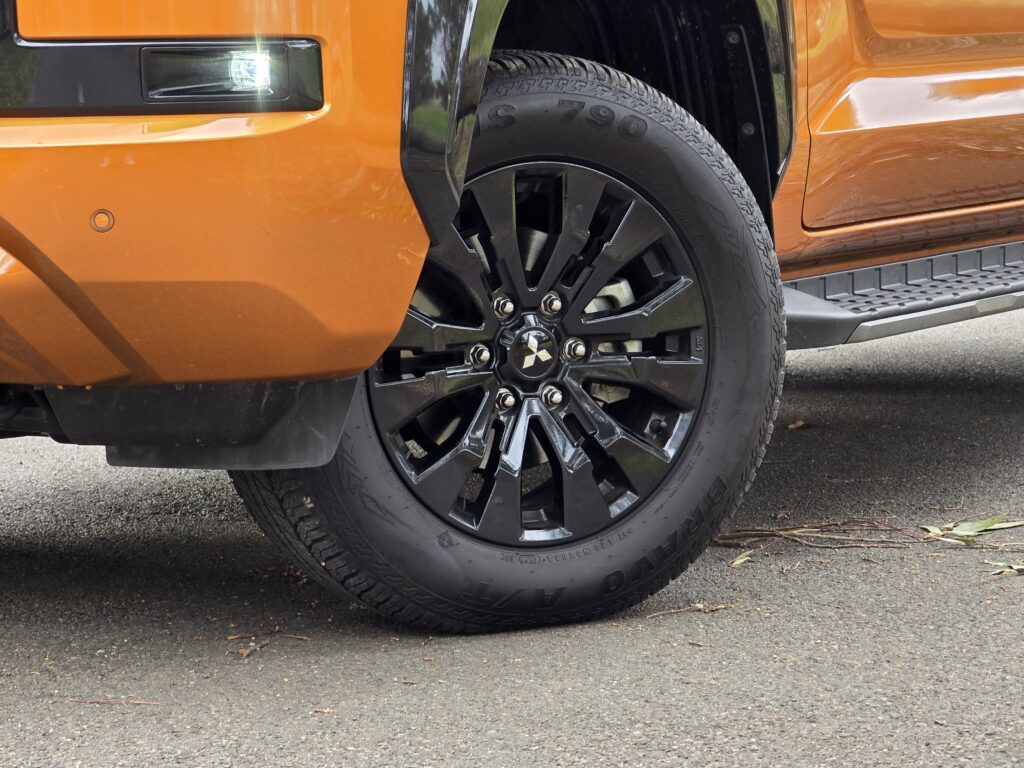
If there’s a weak link, it’s the tyres. The GSR’s Maxxis highway-terrain rubber is fine for general use, but push it through a corner with enthusiasm and it quickly gives up grip, squealing into understeer. It’s not unsafe, just unrefined, and swapping to better all-terrains or premium H/Ts would improve the Triton’s balance noticeably.
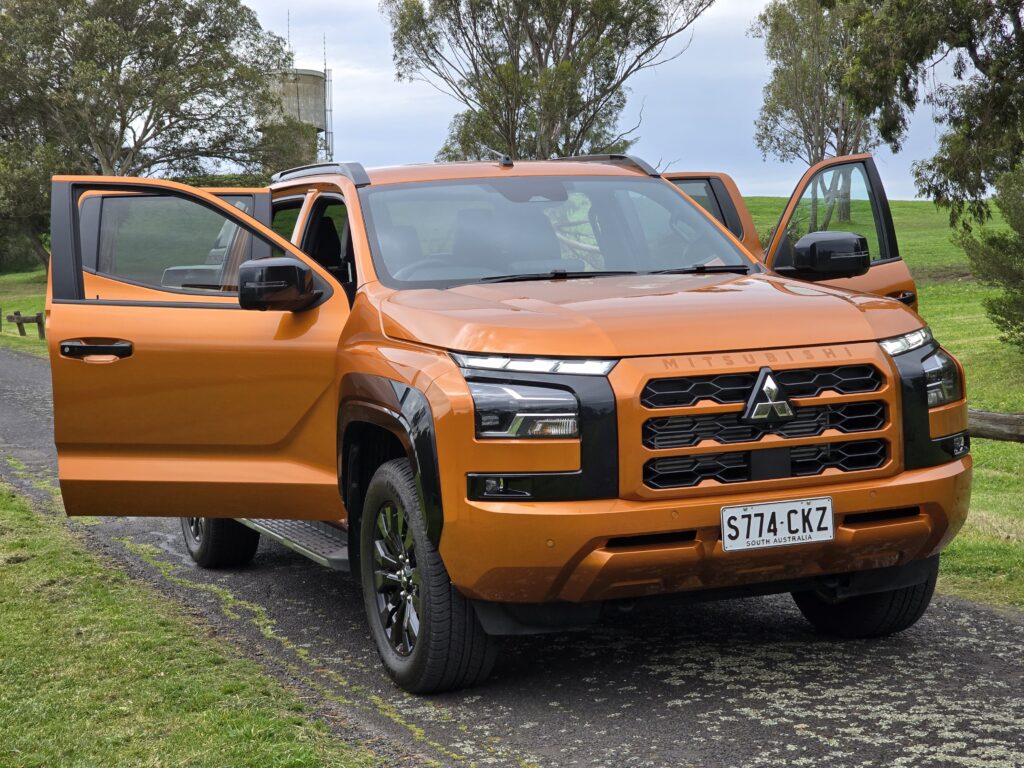

On the technology front, the GSR gets the full safety suite, including adaptive cruise control, which works smoothly and is easy to use. There’s still no lane-centring system, so it can’t quite match the semi-autonomous feel of a Ranger or D-Max. The driver attention monitoring system also remains a frustration as it’s overly sensitive, chiming constantly if you dare to glance at the touchscreen or mirrors for more than a moment. Thankfully, it can be switched off, though you’ll need to do that each time you start the car. Frustrating to say the least.
The Triton is still a great ute to drive and makes both commuting and heading into the country super easy, even if it’s just lacking that little bit of extra finesse.
What is it like inside?
The latest generation Triton’s cabin has come a long way from the austerity of its predecessor, but as tested here in the 2025 Mitsubishi Triton GSR, it’s still more honest and traditional than modern or premium. Compared with something like a Ford Ranger Wildtrak, the Triton GSR’s interior feels a little plain, but bear with us, this might just be a good thing. There’s a lot of smart thinking and genuine functionality here, even if the flair is missing.
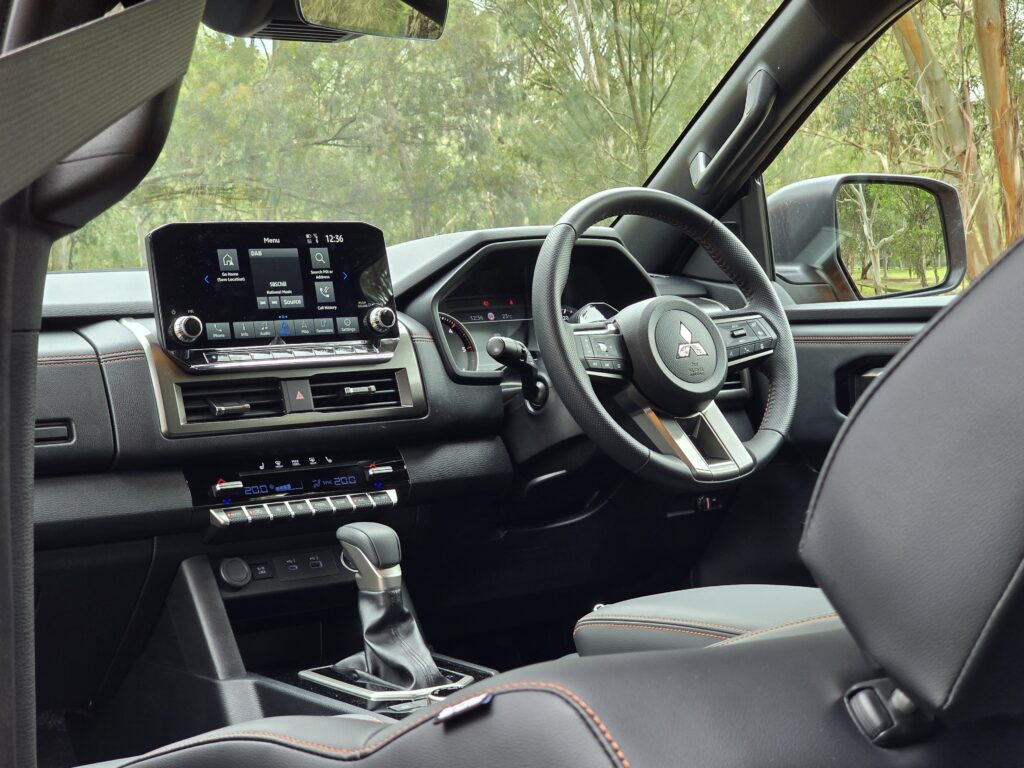
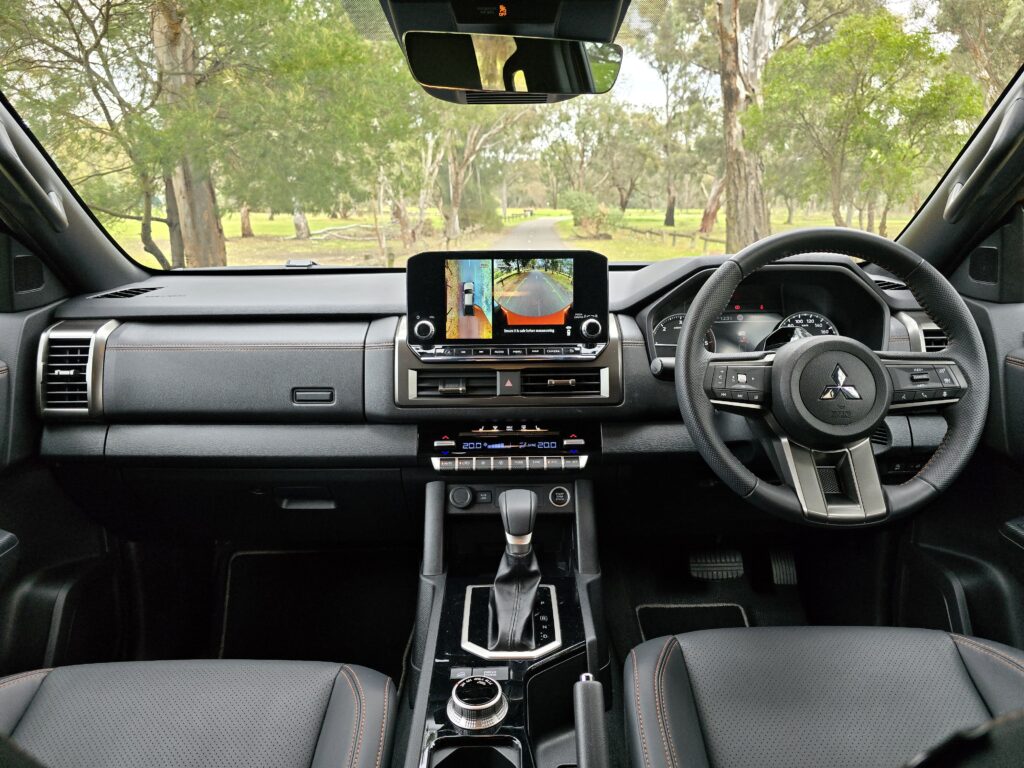
Front and centre is a bright, sharp and glossy 9.0-inch touchscreen that looks modest on paper next to the Ranger’s 12-inch portrait display. Its horizontal layout integrates neatly into the dash, rather than looking like an afterthought, and while Mitsubishi’s infotainment software is hardly cutting-edge, it’s straightforward to use. The wireless Apple CarPlay is a welcome inclusion, while Android Auto users such as me still need to plug in via USB.
The native graphics and menus look dated, and there’s not much customisation available, but if you mostly rely on CarPlay, you’ll hardly notice. Physical shortcut buttons and volume dials beneath the screen are practical, even if the gloss-black plastic around them attracts smudges and fingerprints almost instantly.
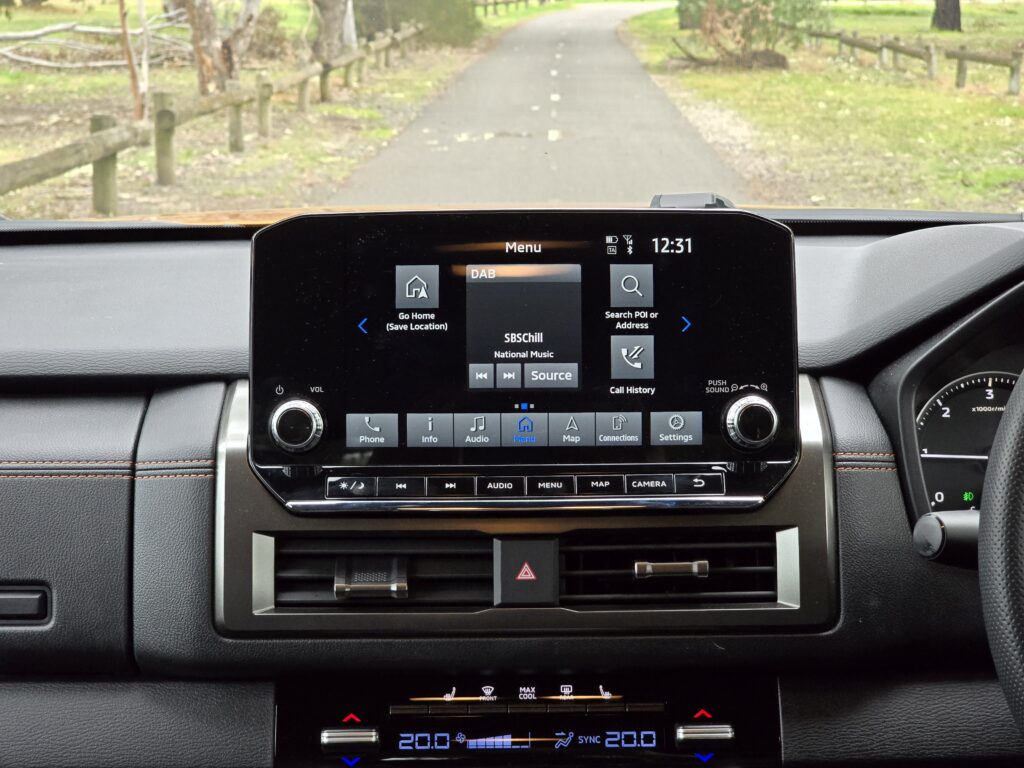
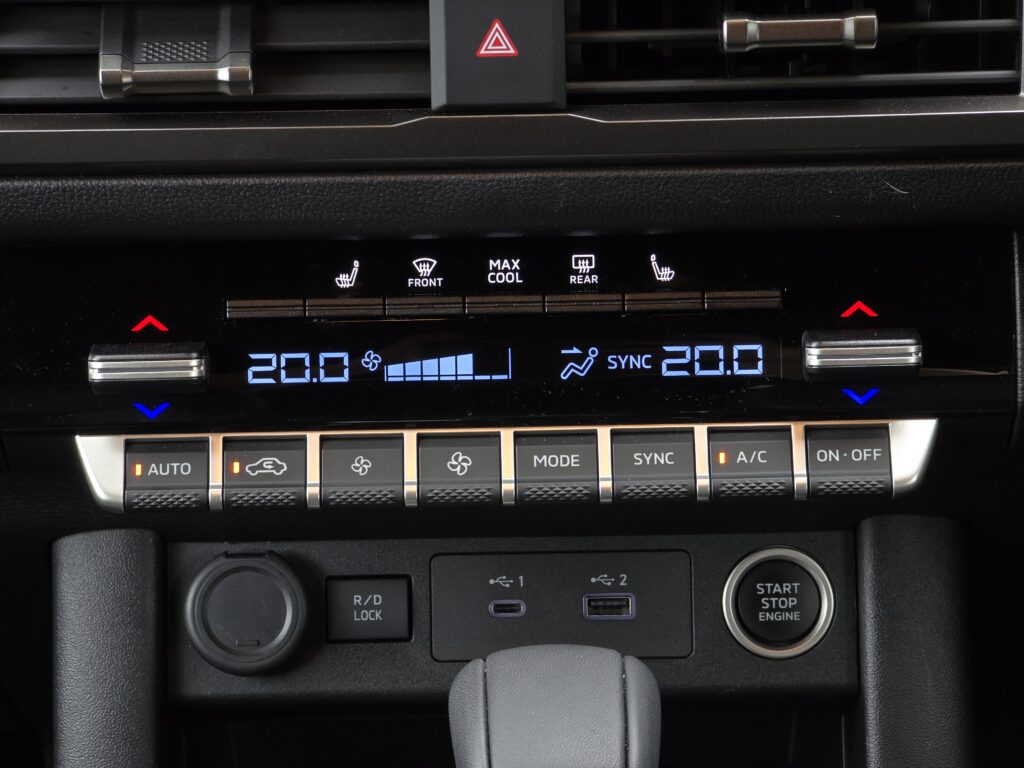
Below sits the climate control system, which keeps things refreshingly simple. It’s mostly analogue, with well-marked buttons and dials, and it’s far easier to use than the touch-based setups found in some rivals. The GSR also adds dual-zone climate control and heated front seats, making it the most comfortable Triton to live with day-to-day.
The leather-appointed seats are broad and supportive. That said, the leather itself feels more hard-wearing than high-end, and the seat base could use a little more cushioning for long highway stints. Luckily, the power adjustment (for both front seats) and lumbar support make it easy to find a good driving position. We loved the fact that the driving position is nicely low-slung, too.

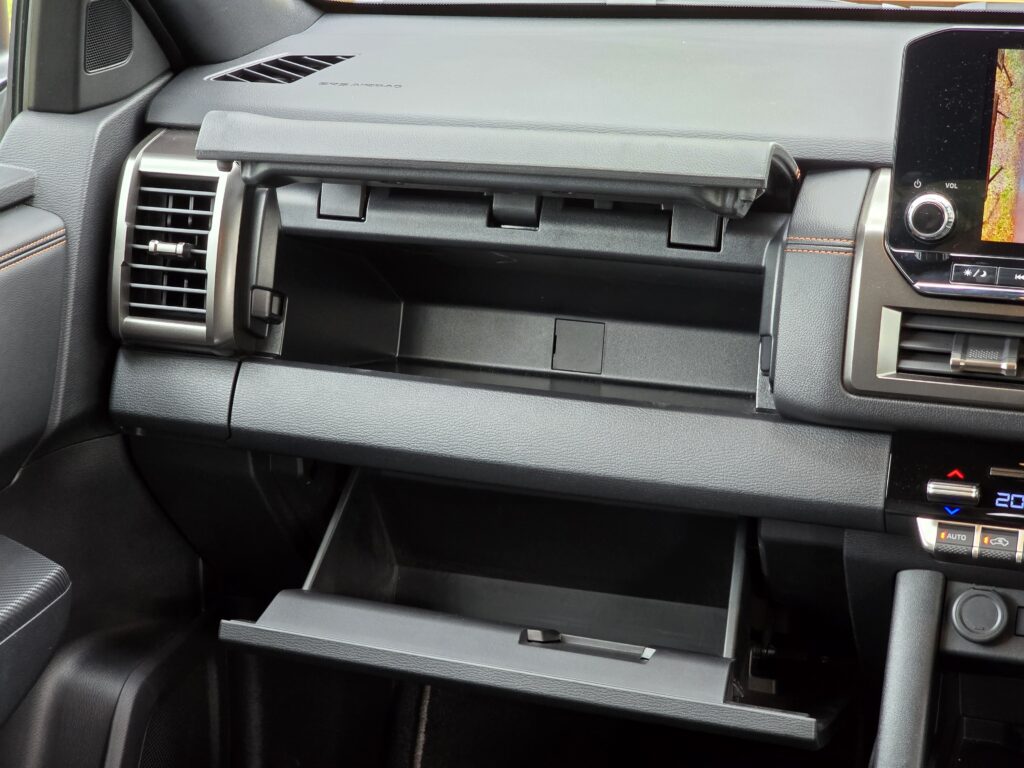
Cabin materials are a mixed bag. The soft-touch surfaces on the armrests and centre console are appreciated, but much of the dashboard and door trim is still hard, shiny plastic. Luckily the GSR has soft padded door trims, unlike some of the lower specs. Some of the faux carbon-fibre accents also feel unnecessary as they don’t cheapen the cabin, but they don’t elevate it either. The leather-wrapped steering wheel is nicely shaped, though, with perforated grips that make it feel rather premium.
Ahead of the driver sits a traditional analogue instrument cluster with a 7.0-inch colour display in between. It’s basic but easy to read, and the trip computer provides clear readouts for fuel use and vehicle settings. You won’t mistake it for the digital displays of newer rivals, but it gets the job done.
Storage space is solid if unremarkable. The dual gloveboxes and large centre bin are useful, and you get cupholders in the doors and centre console, plus the fold-out cupholders at each end of the dashboard unique to the GSR. There’s a phone tray up front with USB-A, USB-C and 12V ports and there a wireless charger, too.
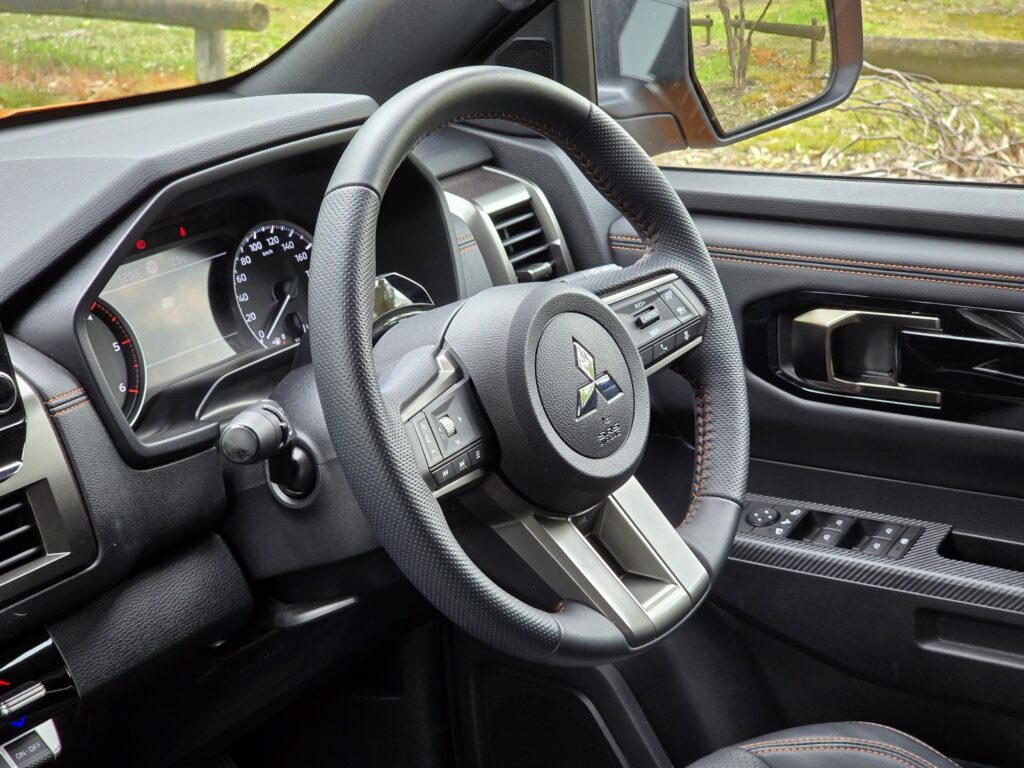
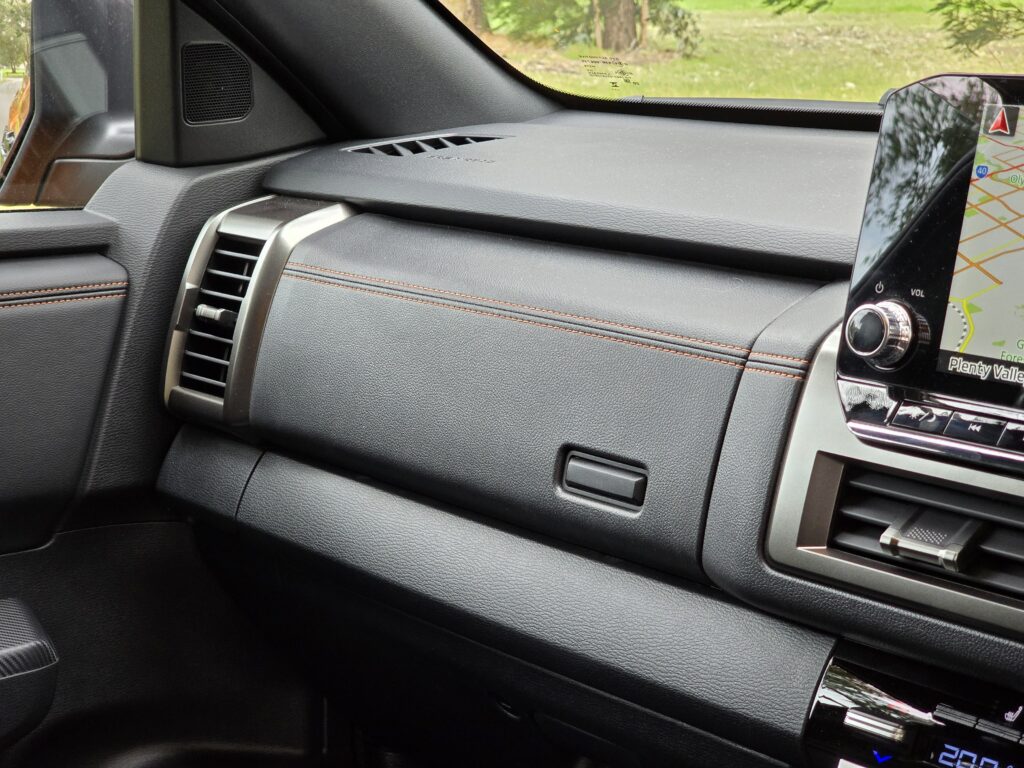
The rear seat area is one of the Triton’s strongest points. Space is generous, with plenty of head- and legroom, and the bench itself is soft and supportive. The roof-mounted air vents are an excellent idea — they deliver strong airflow even on hot days, with a simple control panel to adjust fan speed. Back-seat passengers also get a fold-down armrest with cupholders, door bottle holders, and both USB-A and USB-C ports plus a 12V outlet. It’s a thoughtful setup overall.

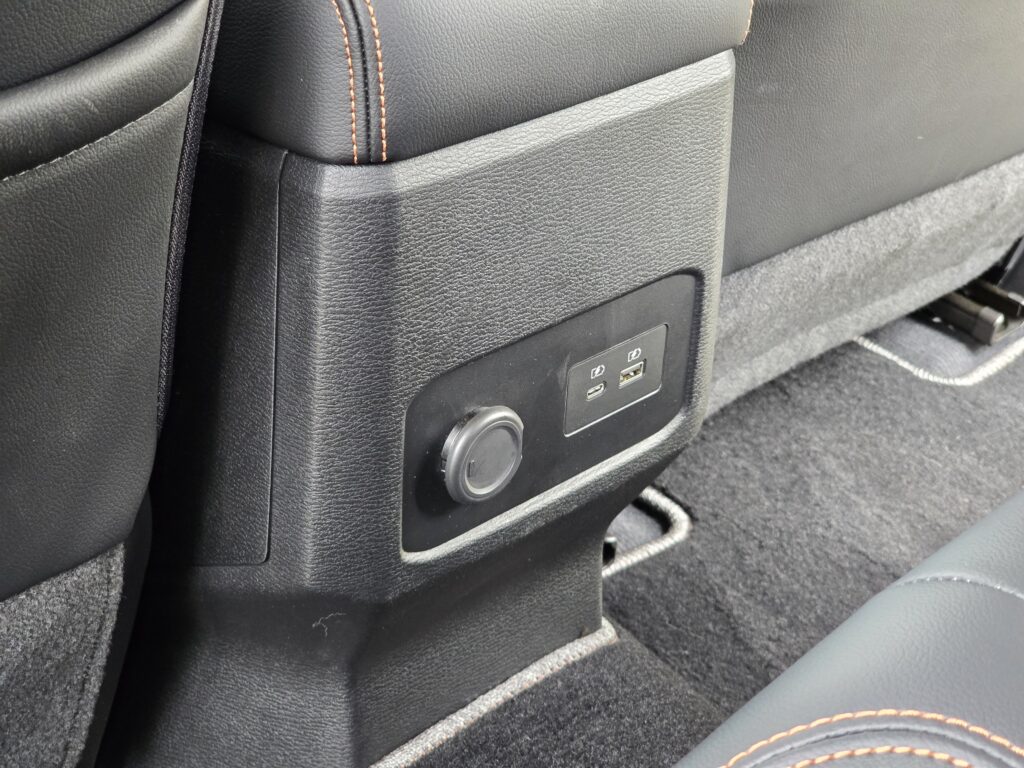
As for cabin access, the Triton GSR’s tall ride height means you’ll still need to climb up, but side steps and grab handles make it easier than in lower-spec models. Once inside, visibility is good, though the upright dash and thick pillars remind you this is still a ute first and foremost.

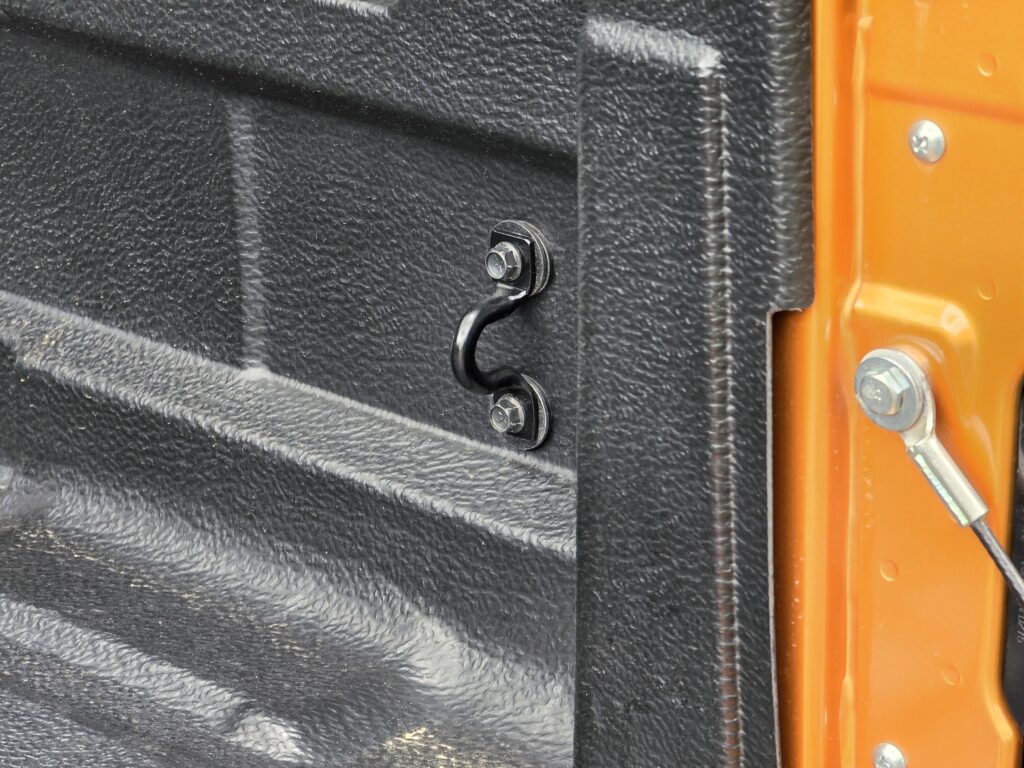

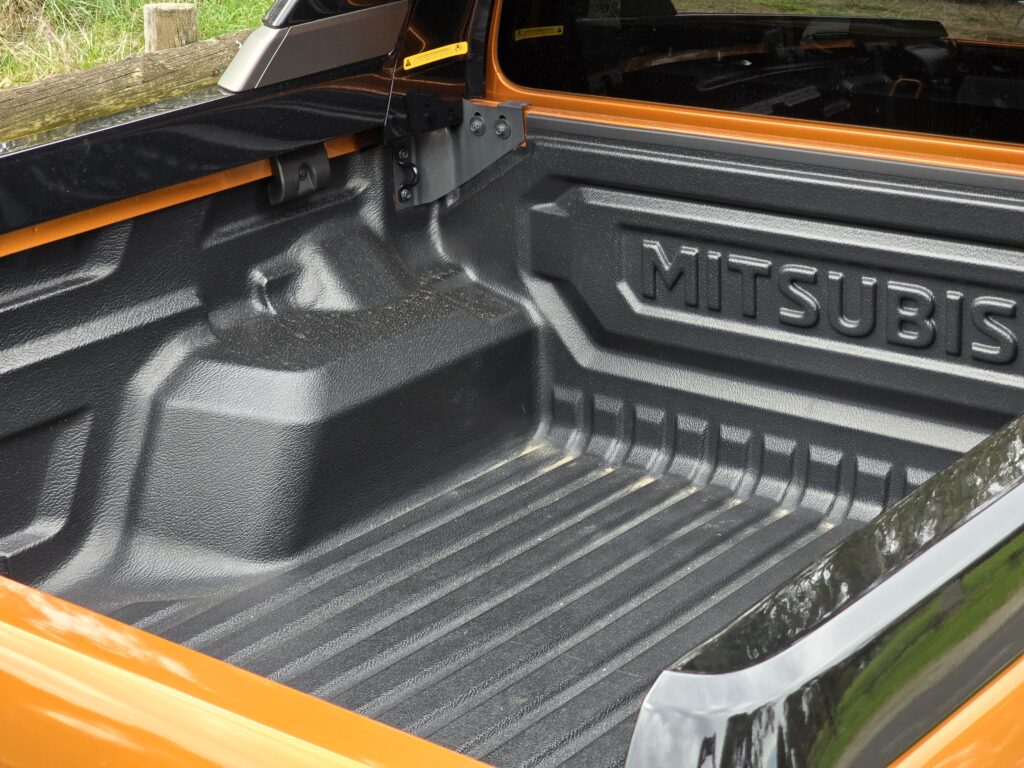
Out back, the tub in the GSR comes standard with a liner and soft tonneau cover, with a wide and flat bed which will serve most well. The tailgate is hydraulically assisted, making it light to operate, though the tonneau cover is surprisingly fiddly to close. The black sports bar looks tough and ties in nicely with the rest of the exterior black pack.
What’s the warranty and servicing like?
The 2025 Mitsubishi Triton is backed by a five-year, 100,000km standard warranty, which is extended by oThe 2025 Mitsubishi Triton is covered by Mitsubishi’s Diamond Advantage ownership program, which includes one of the most comprehensive warranties in the segment. The Triton comes with a five-year/100,000km standard warranty, but this can be extended by one year and 20,000km every time you service the vehicle on schedule at a Mitsubishi dealer — up to a maximum of 10 years or 200,000km.
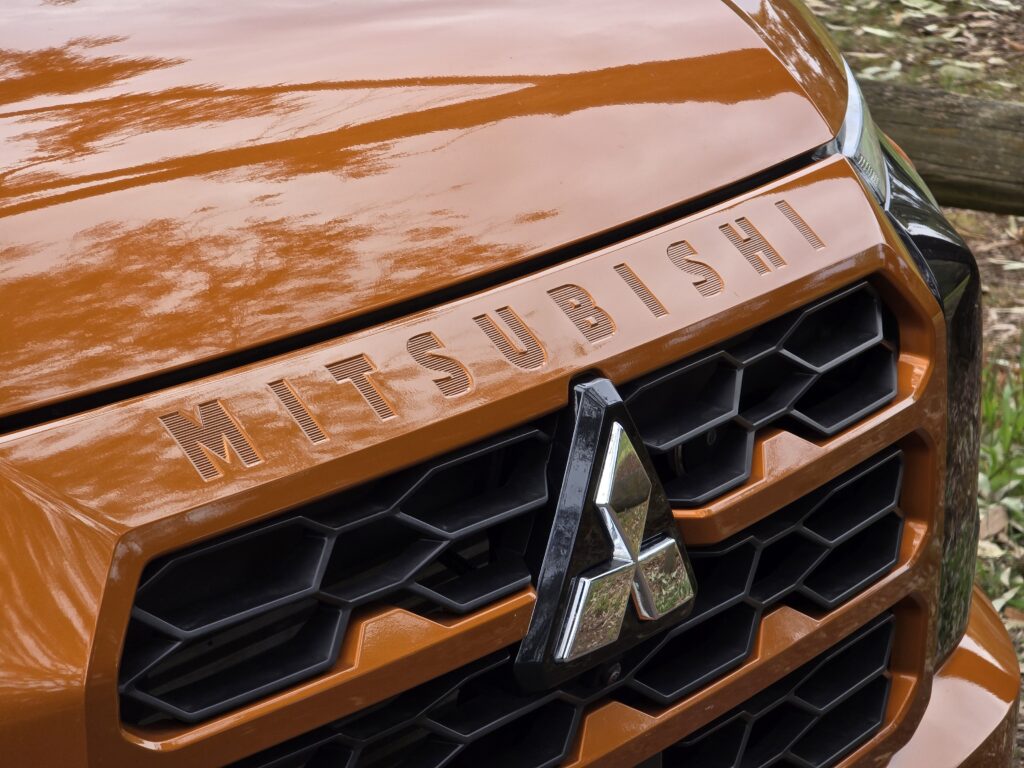

Servicing is required every 12 months or 15,000km, and Mitsubishi’s capped-price servicing program spans the full 10-year period. Across that time, owners can expect to pay a total of $6690 for scheduled maintenance. The first five services each cost $489, with prices gradually increasing from year six onwards.
Mitsubishi also includes 12 months of complimentary roadside assistance with every new Triton purchase, which can be extended annually for up to 10 years if you continue servicing through the Mitsubishi dealer network.
2026 Mitsubishi Triton GSR Rating: 8/10
The Mitsubishi Triton GSR feels like the ute Mitsubishi has been trying to build for years, and one that finally combines the brand’s trademark toughness with real refinement. It looks sharp, feels decent inside, and drives with a composure its predecessor never quite managed. The twin-turbo diesel is smooth and efficient, the steering is excellent, and the full-time four-wheel drive system makes it one of the most confidence-inspiring utes on the market.
What really stands out is how well the Triton GSR balances work and play. It’s capable enough for serious towing and off-road use, yet comfortable and quiet enough to live with every day. It’s not trying to out-luxury the Ranger Wildtrak or reinvent the ute formula, it’s just an honest, well-sorted package that nails the fundamentals.
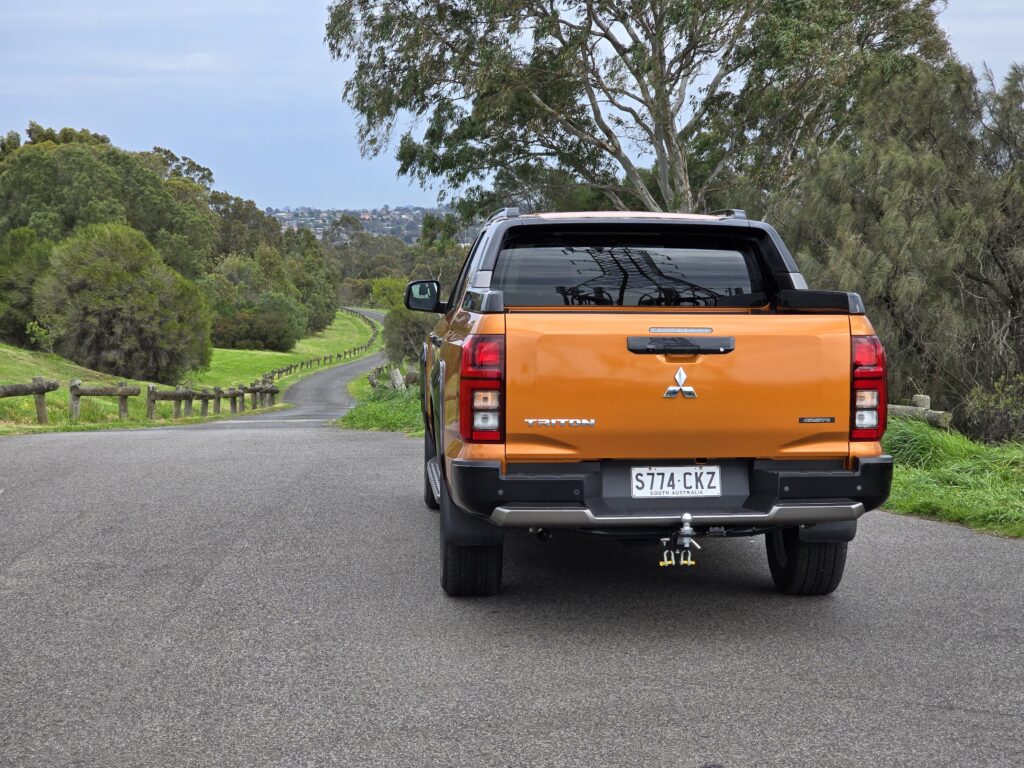
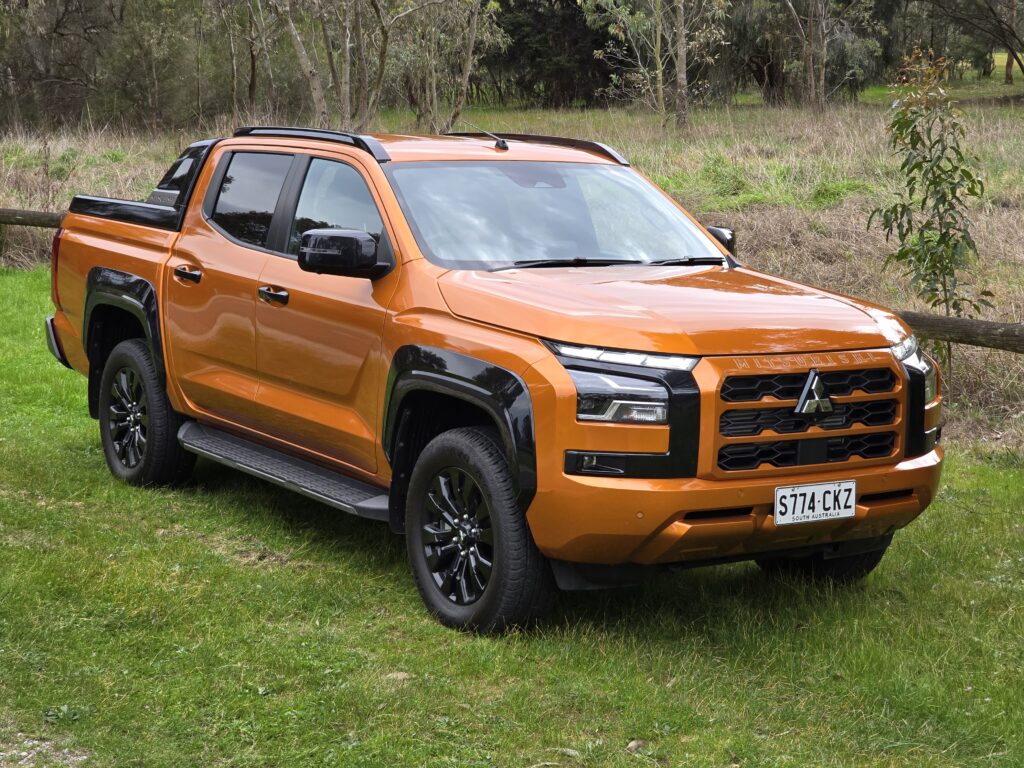
Still, there are things Mitsubishi could tidy up. The driver-monitoring system remains far too sensitive, and the start-stop tech feels unnecessary at best. These are more than small frustrations sadly as they chip away at what’s otherwise a deeply likeable ute.
Make no mistake, if Mitsubishi were to get those details right, while retuning the suspension and gearbox calibration a little, the Triton GSR could easily be the best ute in Australia. It does almost everything well: it’s capable, comfortable, efficient, well-equipped, and keenly priced. It’s the Goldilocks ute, not too tough, not too fancy, just right. A genuinely compelling all-rounder that proves Mitsubishi has what it takes to win over ute buyers.
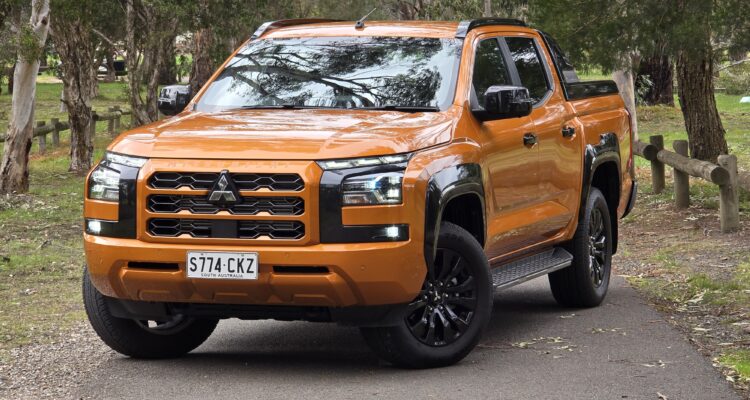
Leave a Reply